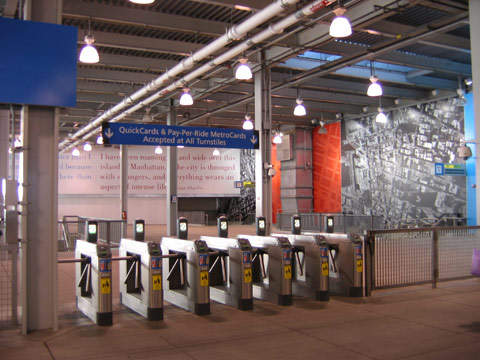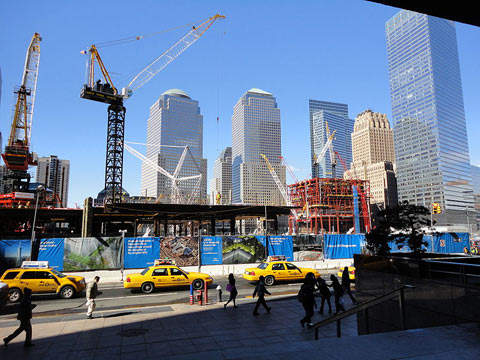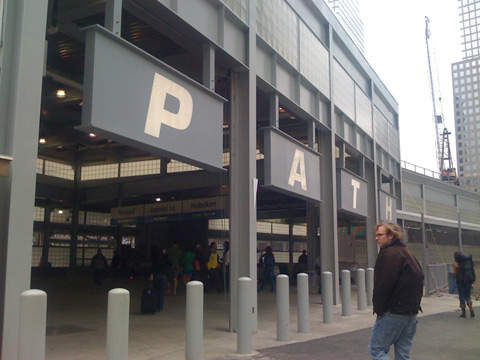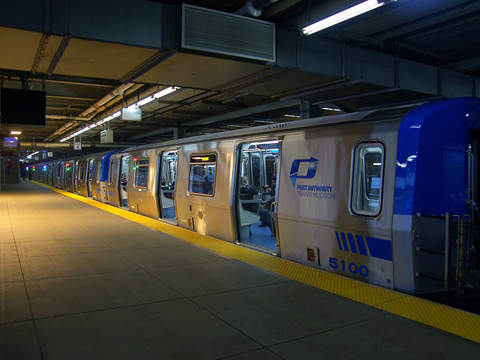The Port Authority of New York and New Jersey is constructing the World Trade Center (WTC) Port Authority Trans-Hudson (PATH) transportation hub in New York, US. The 800,000ft² hub is comparable to the Grand Central Station in size.
The port authority is constructing the project in collaboration with the US Department of Transportation (DoT). The DoT is investing around $1.92bn through the Federal Transit Administration (FTA). The total cost of the project’s construction is estimated at $4bn.
The transportation hub replaces the existing WTC PATH terminal and serves approximately 80,000 commuters and visitors daily.
Construction started in September 2005 and was originally scheduled for completion in 2011, but was delayed by several years. The first phase of the WTC hub was opened in March 2016.
The plan to construct the new transportation hub was an important step in the economic recovery of the region. The hub will provide connections to PATH ferries, subway lines and other railway lines planned for the future.
The project is expected to benefit commuters and create a number of jobs. About $650m in wages and salaries is expected to be generated with the construction of the project. By 2020, the hub is expected to serve 250,000 commuters daily.
WTC PATH station history
The WTC PATH station first opened in 1971. Following the September 11 attacks in 2001, the station was heavily damaged and had to be shut down for almost two years. A temporary WTC PATH station opened in 2003. In 2004, the Port Authority decided to build a world-class transportation hub in place of the temporary station.
Transportation hub design and construction
Spanish architect Santiago Calatrava unveiled the design for the project in January 2004, but it was modified in 2005 to provide more safety elements to the station.
The design was inspired by the flight of a bird and comprised 150ft-high retractable glass and steel wings, which open and close to provide sunlight and natural air-conditioning to the building. In 2008, the design was modified and the wings were changed to non-retractable in order to reduce the project cost.
Calatrava designed the hub in collaboration with Downtown Design Partnership, which includes DMJM Harris and STV. Dack Consulting Solutions provided estimating and scheduling services and Hill International supplied programme management services for the project.
Parsons Corporation is responsible for the infrastructure group design of the project. The company’s responsibilities include supervising the civil, geo-technical and environmental design of the project. It also oversees the installation of the project’s communication and safety systems.
The main contractor for the project was Phoenix Constructors, a joint venture (JV) company led by Fluor Corporation and Skanska. Other partners in the JV include Granite Construction and Bovis Lend Lease.
In February 2010, the port authority awarded a $542m contract to Skanska and Granite. The port authority altered its contract with Phoenix to award the new contract to take advantage of the competitive market.
Other contractors involved in the project include DCM Erectors, which has been awarded a contract to construct 22,305t of structural steel for the hub.
Ferreira Group provided consulting services to ensure the hub has a minimised carbon footprint. The Nicholson Construction Company was contracted to provide its geo-technical construction techniques, such as micropiles and jet grouting for the project.
WTC transportation hub services
The new WTC transportation hub serves commuters travelling between New Jersey and New York. It will connect 13 subway lines and the World Financial Center ferry terminal via underground passageways to the east and west areas of New York.
The hub also links the TriBeCa area and the Wall Street financial district to the north and south areas of New York.
The hub enables visitors to access the WTC site, which includes five the WTC office towers, the memorial and museum. It also serves planned transportation infrastructure such as the proposed John F Kennedy rail link to the international airport and Long Island.
Transportation hub facilities
The WTC transportation hub features a multi-storey main transit hall, which includes a lower concourse, an upper concourse and a public waiting area. A 200,000ft² retail space to house a range of restaurants and stores is also part of the hub. The new environmentally friendly hub features advanced safety, security and communications systems.
Wireless transportation hub technology
Parsons chose WinProp to install wireless infrastructure in the WTC transportation hub. WinProp prepared accurate indoor and urban propagation models for the new hub to install the infrastructure since the building is still under construction. The company could not make use of manual tuning and used deterministic propagation models to plan the wireless infrastructure.







